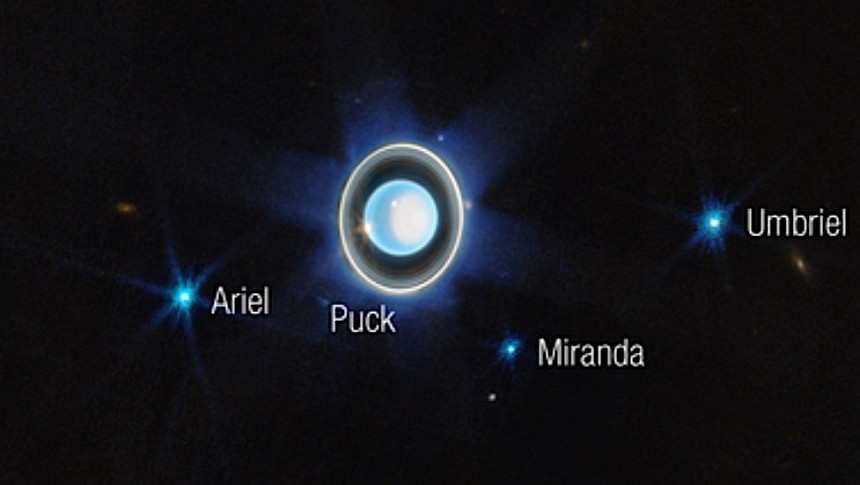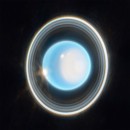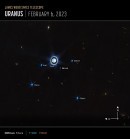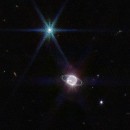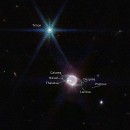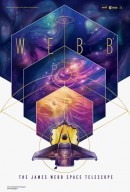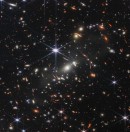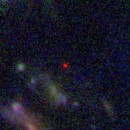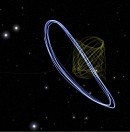We, humans, like to pride ourselves with our fascination for rocky worlds. After all, they have the biggest chance of harboring some kind of life. But rocky worlds are generally boring to look at, and nothing beats gas and ice giants in terms of cool factor, both literally and figuratively.
Our solar system has two gas giants, Saturn and Jupiter, and two ice giants, Neptune and Uranus. All four have been the subject of study for our species for decades now, so we have a pretty good idea of what they are like. Yet few of the images of these planets are as detailed as the ones sent back in recent months by our world’s fanciest (and most expensive) space telescope, the James Webb.
Back in the fall of last year, Webb showed the world planet Neptune in a way never before seen, as a ghostly specter of light surrounded by rings. This week, its ice sibling, Uranus, falls under the spotlight as a blue, white and orange marble of perfection.
Uranus is the seventh planet from the Sun and comes with traits so peculiar we even sent a spacecraft that way to have a closer look: it rotates on its side, at a 90-degree angle from the plane of its orbit, causing some very long seasons. It, too, is surrounded by rings, and it takes it 84 years to spin once around the Sun.
The mission that visited this world is called Voyager 2, and it reached the planet in 1986. When it did that, Uranus was in such a position as to show the spacecraft its south pole, where it was summer at the time. Voyager, being made so many decades ago, only managed to look at the place with a camera, and that resulted in the image of almost featureless blue-green ball in visible wavelengths.
Webb however sheds literal new light on the place. Despite being much further away from the planet than Voyager, its high-power gear and fancy equipment allowed it to capture a stunning close-up of the place in infrared. Also, what you’re looking at now is the planet’s north pole, captured at a time when it’s late spring there.
Webb captured the image back in February with its Near-Infrared Camera (NIRCam), using two filters that give Uranus the blue and orange colors. More importantly than colors, though, we get to see the planet’s rings in incredible detail, down to the faintest of them all – another proof, NASA brags, of Webb’s “unprecedented sensitivity.”
Of the 13 known Uranus rings, 11 can be seen in this image. A closer, hard look at the image, will also reveal a great number of the planet’s 27 known moons.
Moreover, the telescope also captured something astronomers describe as a polar cap. Visible as the big spec of white on the right side of Uranus, it is a feature that only becomes visible when the pole is bathed in direct sunlight and disappears when fall reaches those plains. People are hopeful the Webb data might help them explain why that is so.
So here it is, Uranus like you’ve never seen it before. We can only imagine what Webb’s next photos might bring.
Back in the fall of last year, Webb showed the world planet Neptune in a way never before seen, as a ghostly specter of light surrounded by rings. This week, its ice sibling, Uranus, falls under the spotlight as a blue, white and orange marble of perfection.
Uranus is the seventh planet from the Sun and comes with traits so peculiar we even sent a spacecraft that way to have a closer look: it rotates on its side, at a 90-degree angle from the plane of its orbit, causing some very long seasons. It, too, is surrounded by rings, and it takes it 84 years to spin once around the Sun.
The mission that visited this world is called Voyager 2, and it reached the planet in 1986. When it did that, Uranus was in such a position as to show the spacecraft its south pole, where it was summer at the time. Voyager, being made so many decades ago, only managed to look at the place with a camera, and that resulted in the image of almost featureless blue-green ball in visible wavelengths.
Webb captured the image back in February with its Near-Infrared Camera (NIRCam), using two filters that give Uranus the blue and orange colors. More importantly than colors, though, we get to see the planet’s rings in incredible detail, down to the faintest of them all – another proof, NASA brags, of Webb’s “unprecedented sensitivity.”
Of the 13 known Uranus rings, 11 can be seen in this image. A closer, hard look at the image, will also reveal a great number of the planet’s 27 known moons.
Moreover, the telescope also captured something astronomers describe as a polar cap. Visible as the big spec of white on the right side of Uranus, it is a feature that only becomes visible when the pole is bathed in direct sunlight and disappears when fall reaches those plains. People are hopeful the Webb data might help them explain why that is so.
So here it is, Uranus like you’ve never seen it before. We can only imagine what Webb’s next photos might bring.
